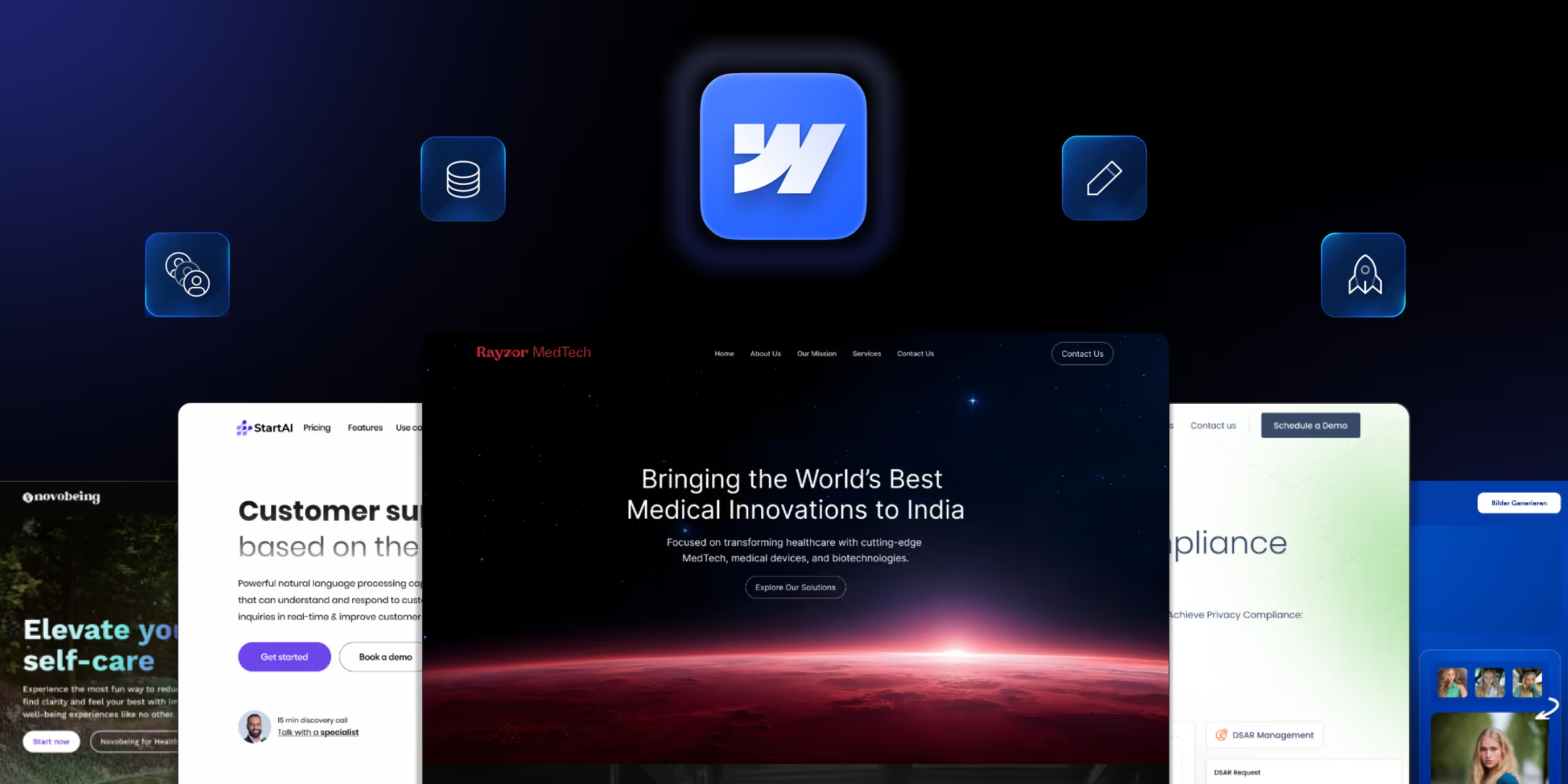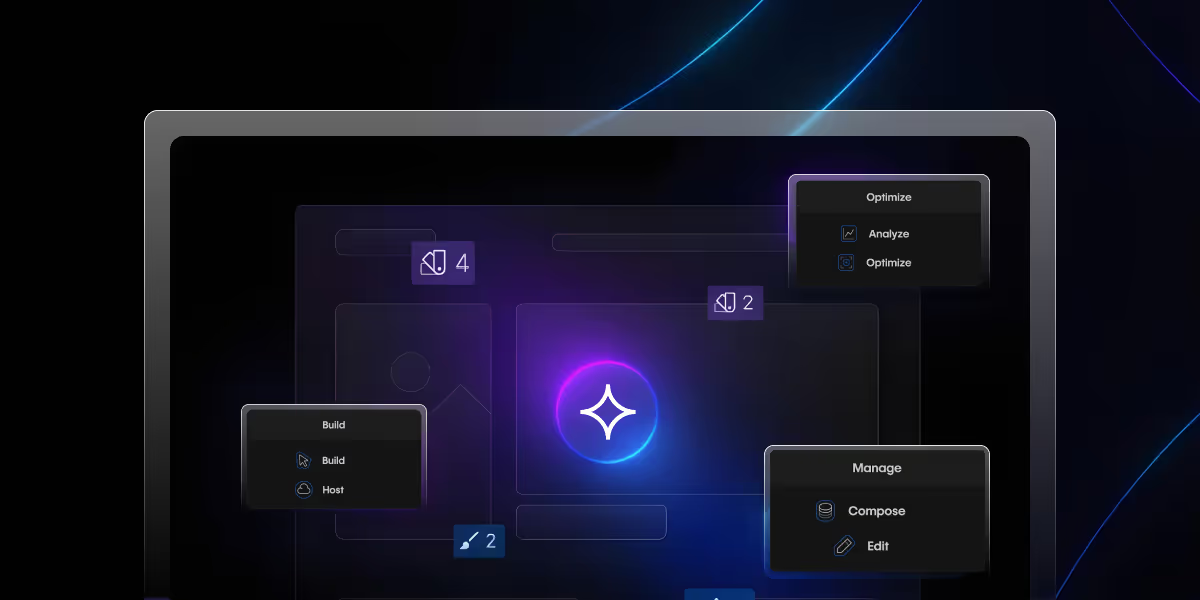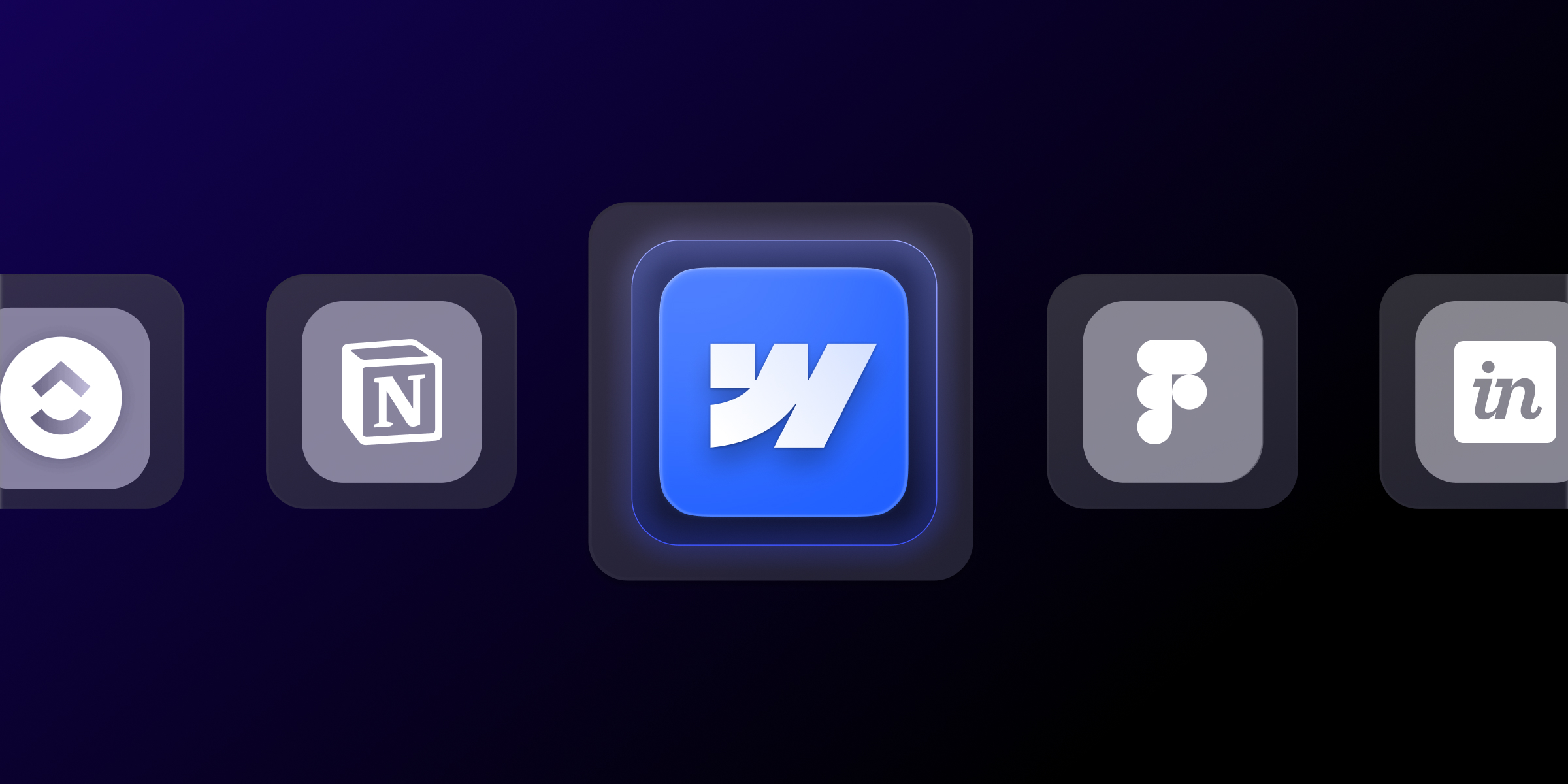Custom Webflow Design Templates: Complete Customization Guide
Master custom Webflow designs with our complete template customization guide. Expert tips for transforming any template into a unique, brand-aligned website.

Website design in 2025 is more dynamic, data-driven, and user-centric than ever before. As digital expectations rise and AI integration becomes mainstream, brands are expected to deliver seamless, personalized, and immersive experiences across all devices. In this evolving landscape, staying updated with the latest web design trends isn’t just a creative choice; it’s a strategic move that impacts everything from engagement to conversions.
If you're building or managing your website on Webflow, adopting the latest trends will give you a competitive advantage. Webflow’s powerful no-code design system allows you to implement cutting-edge UI/UX techniques, experiment with animation, and deliver high-performing, responsive websites with minimal developer input.
In this blog, we explore the top 10 web design trends of 2025 and show you how to apply them to your Webflow project to boost user experience (UX), conversions, and brand visibility.
The modern web is no longer static, it responds to users’ preferences, behaviors, and needs in real-time. In 2025, brands that prioritize user-first design see measurable results in engagement and retention. Following design trends helps ensure your website feels intuitive, relevant, and delightful.
Design is now deeply connected to SEO and conversion optimization. Google rewards fast, responsive, accessible, and mobile-friendly websites. Likewise, users associate polished and modern design with professionalism and trustworthiness.
Webflow stands out as one of the best platforms to implement design trends thanks to its visual editor, integrated CMS, flexible animation tools, and compatibility with third-party integrations. Whether you’re building a portfolio, a B2B SaaS site, or an eCommerce platform, Webflow makes modern design more accessible than ever.
AI personalization dynamically adapts content, product recommendations, and layouts based on user behavior, location, or preferences.
Personalized experiences improve conversion rates by up to 80%. They make users feel understood, reducing bounce rates and increasing session duration.
3D graphics, depth effects, and immersive visuals captivate users and make websites more interactive.
SaaS demos, product showcases, tech portfolios, and creative agencies looking to wow their visitors.
Clean, simple designs paired with oversized or experimental typography to emphasize hierarchy and message clarity.
Simple design reduces mental load. Visitors instantly understand where to look and what action to take, ideal for lead generation and storytelling.
Scroll-triggered animations and layered parallax create smooth storytelling and add visual depth.
Offering dark themes with high contrast not only looks sleek but also improves readability in low-light environments.
With the rise of voice-activated browsing and AI assistants, websites must adapt their structure for voice-first interaction.
Websites now update in real time, pulling data from APIs or databases based on context or user input.
Microinteractions are small animations or feedback that enhance user actions (e.g., hover effects, button clicks, and scroll cues).
Inclusive design ensures your website is usable by all people, regardless of ability, age, or background.
Performance is no longer optional. Google’s Core Web Vitals measure real-world page experience and affect rankings.
While trends are exciting, adding too many effects or integrations can slow your site and overwhelm users. Choose 2–3 trends that align with your brand and audience, and implement them thoughtfully.
Webflow empowers you to test these trends without hiring a developer. Use:
We interviewed a web design agency in Chicago and here's what they said, "Trends are tools, not rules. A fast-loading, accessible website that reflects your brand’s unique identity will always outperform a flashy site that confuses users. Customize trends to fit your tone, goals, and audience needs.
Web design in 2025 is defined by intelligence, inclusivity, and interactivity. From AI personalization and dynamic content to inclusive UX and performance optimization, these trends help you build a website that’s not just beautiful but smart and effective.
By using Webflow’s modern design tools, you can stay ahead of the curve without writing a line of code. Whether you're a designer, marketer, or entrepreneur, adopting these trends will ensure your site stands out in a crowded digital space.
Ready to future-proof your Webflow project? Explore trend-ready templates, smart integrations, and custom design services at theCSS Agency. theCSS Agency help SaaS, IT, and B2B brands convert more with better Webflow websites.
In 2025, top web design trends include AI-powered personalization, immersive 3D elements, dark mode design, glassmorphism, micro-interactions, voice user interfaces, and inclusive accessibility. These trends aim to improve user engagement, visual appeal, and overall site performance.
AI is transforming web design by enabling smart automation, personalized user experiences, and faster prototyping. Tools like Webflow’s AI Site Builder help streamline the design process while adapting to user behavior, saving time and improving ROI.
In 2025, web accessibility includes keyboard navigation, screen reader compatibility, color contrast compliance, and semantic HTML. Webflow offers built-in tools and custom attributes to help you build inclusive, ADA-compliant websites.
Absolutely. Trends like AI personalization, minimalistic design, and performance optimization align perfectly with B2B and SaaS goals, boosting conversions, simplifying UX, and enhancing trust. Webflow allows full customization for business-centric design.
Yes, Webflow is one of the best platforms for modern, trend-based web design in 2025. Its visual editor, advanced interaction tools, and flexible CMS allow designers to implement cutti ng-edge trends like AI-powered personalization, glassmorphism, dark mode, 3D animations, and micro-interactions, without writing complex code.

Master custom Webflow designs with our complete template customization guide. Expert tips for transforming any template into a unique, brand-aligned website.

Learn how the Webflow AI Assistant transforms web design and content creation. Boost your efficiency and creativity with this innovative tool!

Find the 15 essential Webflow development tools that top agencies use in 2025. Boost productivity, streamline workflows, and deliver better client results.
Quick Turnaround. No Contracts. Cancel Anytime. Book a 30 minutes consulting call with our expert.